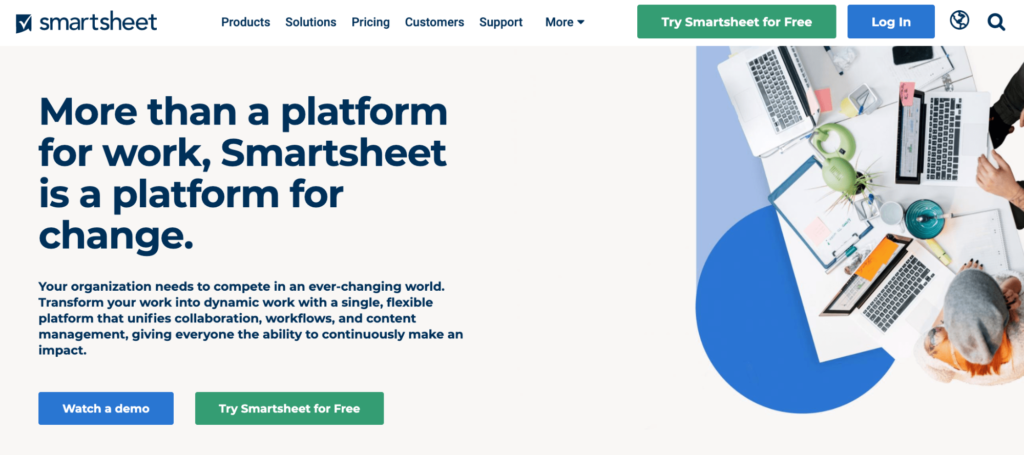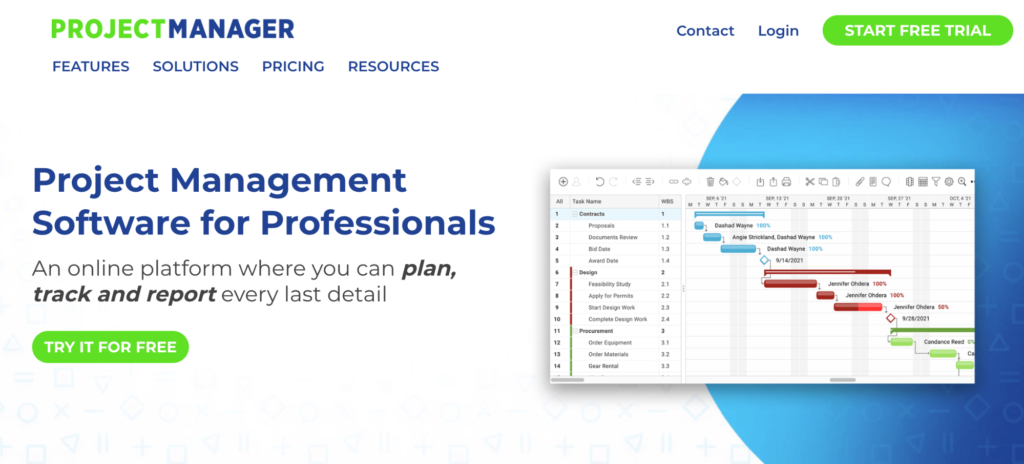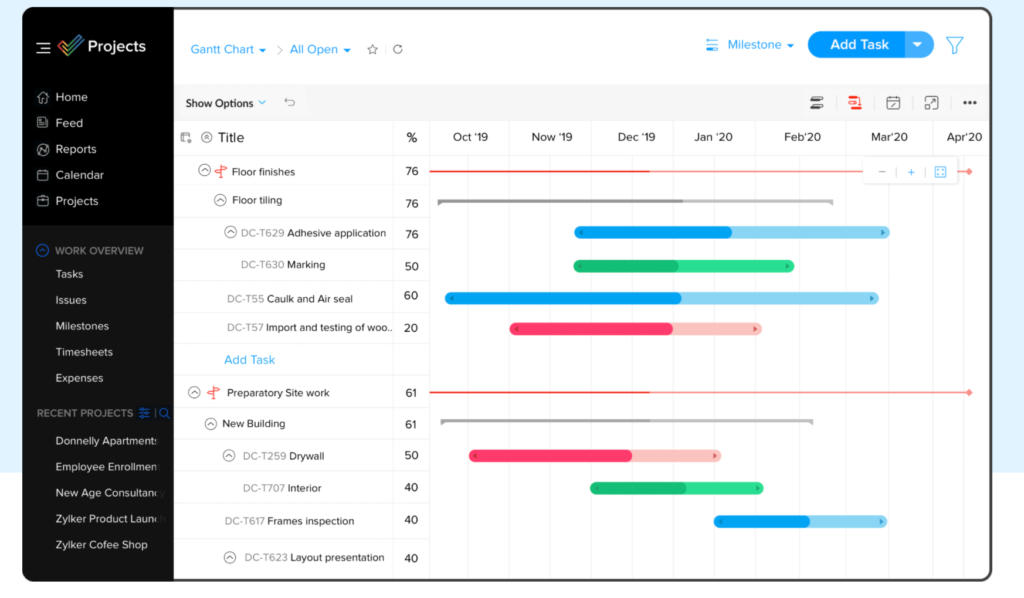Project managers are faced with tough decisions on a daily basis. Some of these choices can make or break the success of a project.
But what drives your decisions? How do you measure the core elements of the project?
Without a proper system in place, project managers are forced to make gut decisions that don’t always align with the data. While this may work sometimes, it’s not a sustainable framework for the long-term, and it can be extremely costly.
If you’re looking for a better way to keep your project on track, earned value management might be the solution for you. This guide will explain everything you need to know about earned value management so you can implement this framework into any existing or future projects.
What is Earned Value Management?
Earned value management (EVM) is a structured approach to measure cost, scope, and schedule at a task or project level. With EVM, project managers gain data-driven insights to objectively understand what’s happening with the project.
It’s a deeper way of simply looking at a project schedule and budget. EVM allows managers to understand the actual work and progress that’s being accomplished. Earned value management ultimately helps project managers estimate the total cost and completion dates of a project with greater accuracy.
3 Tools to Improve Earned Value Management
To have the best possible experience with earned value management, you should be using software to your advantage. These are my top three favorite tools for EVM:
#1 — Zoho Projects
Zoho Projects is a cloud-based project management solution trusted by teams across a wide range of industries. It’s perfect for project planning, remote work, and team collaboration for projects of all shapes and sizes. One of the reasons why I like Zoho Projects so much is because it’s user-friendly and affordable. There’s virtually no learning curve, and premium plans start at just $5 per user per month.
In terms of earned value management, Zoho Projects has everything you need to succeed. You can use it to create a work breakdown structure to get organized and plan your project in the initial stages. Zoho Projects lets you calculate earned value management from the budget settings of your project dashboard as well.
You can also use this tool to create a chart for earned value analysis including, earned value, planned value, actual cost, and planned cost. Then you can share these reports with the appropriate parties and use them to make data-driven decisions.
Try Zoho Projects for free with a 10-day trial.
#2 — Smartsheet

Smartsheet is one of the most versatile business tools on the market today. This robust platform takes the concept of a basic spreadsheet and brings it to the next level with data-driven insights and graphs. While the software is trusted across a wide range of different departments and industries, there are specific solutions within Smartsheet that can be applied to project management.
The tool has features project planning, scheduling, task tracking, resource management, budget tracking, strategic planning, and more. In terms of earned value management, these are the data points that you’ll need to be calculating.
You can set up Smartsheet to calculate scheduling and budget variance, as well as the other key metrics associated with earned value. Smartsheet comes with templates for EVM, so you won’t have to prepare your spreadsheet from scratch.
Business plans start at $25 per month, and you can try it for free with a 30-day trial.
#3 — ProjectManager.com

Over 375,000 project managers across the globe rely on ProjectManager.com. The software is trusted by NASA, Volvo, Avis, the United States Postal Service, and other well-known organizations in various industries. This software comes with everything you need to plan, track, and report your projects.
I like ProjectManager.com because it comes with built-in tools for earned value management. There’s even a time panel within your project dashboard that will calculate whether you’re ahead, behind, or on schedule using a visual graph. Use the software to track progress by task, measure cost, and get an in-depth view of the overall health of your project as it relates to EVM.
You can use ProjectManager.com to generate reports and share them with executives or key stakeholders as well. Plans start at just $15 per month. Sign up today to get started with your 30-day free trial.
The Basics of Earned Value Management
Let’s take a closer look at the core components of earned value management. The following sections will make it easier for you to fully understand and digest this concept so you can apply it to your projects.
Earned Value Management Calculations
As an EVM beginner, some of the terminologies can be a bit intimidating at first glance. While there is some math involved, it’s actually fairly easy to understand. There are plenty of online tools and project management software options out there that can help you with these calculations, so you don’t have to worry about doing too much by hand.
Here are the calculations you need to know:
-
- Planned Value (PV) — PV is the budgeted cost for work scheduled. It varies on the scope of the project and your overall progress in the schedule.
PV= (Total Project Cost) x (% of Planned Work)
-
- Actual Cost (AC) — AC is the actual cost of work performed to date. This is easy to calculate if you’re using software to track costs. Just don’t forget about hidden expenses like resources, materials, software, overhead, and more.
AC = Cumulative Sum of Costs to Date (or over a specific period)
-
- Earned Value (EV) — EV is the overall project budget multiplied by the current percentage of the project’s completion. It’s helpful to compare your budget and schedule estimates against the actual project status.
EV = (Total Project Cost) x (% of Actual Work Completed)
Once you’ve determined PV, AC, and EV, you can use variance metrics to determine how far off you are from the project baseline. Here are the EV variance calculations you need to know:
-
- Schedule Variance (SV) — SV is a quantitative indication of your progress related to the forecasted schedule. If the SV is negative, you’re behind schedule, and if it’s positive, then you’re ahead of schedule. An SV of zero indicates that the project is exactly on schedule.
SV = Earned Value- Planned Value
-
- Cost Variance (CV) — CV measures your divergence from your actual costs compared to the original budget. If the CV is negative, you’re over budget, and if it’s positive, you’re under budget. A CV of zero indicates that the budget is exactly on track.
CV = Earned Value – Actual Cost
Aside from variance, you can also measure your project performance through indexes. These calculations will also help you measure schedule and cost:
-
- Schedule Performance Index (SPI) — If the SPI is greater than one, the project is ahead of schedule, and if the SPI is less than one, then the project is behind schedule.
SPI = Earned Value Planned Value
-
- Cost Performance Index (CPI) — If the CPI is greater than one, the project is under budget, and if the CPI is less than one, then the project is over budget.
CPI = Earned Value Actual Cost
In short, once you take the basic calculations (PV, AC, and EV), you can use them to measure the project performance by variance (SV and CV) or see how the project stands on an index (SPI and CPI).
Project Scope and Organization
To get started with EVM for an actual project, you need to get organized and determine the scope of your project. There are three formal documents that can be used to accomplish this:
- Work Breakdown Structure (WBS)
- Organizational Breakdown Structure (OBS)
- Responsibility Assignment Matrix (RAM)
The WBS is designed to separate high-level deliverables into smaller packages of tasks. It’s displayed on a graph to provide a visual representation of the work scope based on hierarchy. An OBS shows all of the people, departments, and teams involved with the project. This is also displayed on a chart based on hierarchy and includes everyone’s responsibilities.
The responsibility assignment matrix combines WBS and OBS. It explains exactly who will perform which tasks by stage of the project.
Planning, Scheduling, and Budgeting
These parameters are used to monitor and control the project from start to finish.
You’ll use a WBS during the initial planning stage. But you’ll also need to continue monitoring all tasks and milestones. The best way to do this is with a schedule that contains due dates for each task.
Your project budget must be kept in mind at all times. This includes the scheduling process. You must determine the cost of each task or activity within the schedule. The sum of all your work costs will be used as the performance baseline. You’ll measure against this number throughout the project to see how far you’ve deviated from the plan.
Accounting Factors
To ensure accuracy with earned value management, you must take your bookkeeping and accounting principles into consideration. It’s crucial that actual costs of work completed are captured consistently throughout the entire project.
There could be instances where you incur a cost today but don’t actually pay it until months down the road. But this cost needs to be accounted for at the time it was incurred to calculate the earned value accurately.
To avoid this problem, you should be using accrual-based accounting for your projects.
Analytics and Reporting
Once you’ve performed the calculations listed earlier, you need to report these metrics to stakeholders, sponsors, and executives involved with the project. This will give everyone concrete visibility into the actual progress of a given project.
You should also define variance thresholds before the project starts. If a certain calculation exceeds a threshold, then you need to take corrective actions, so the project doesn’t veer too far off its course.
This is especially important for cost and schedule. A slight delay or an activity that’s slightly over budget might be ok. But if the variance is significantly higher than expected, you can make data-driven decisions before things get out of hand.
3 Tricks For Earned Value Management
To have success with earned value management, apply these quick tricks and best practices:
Accurately Track All Data
Earned value management is quantitative. The information and metrics that come from your calculations are only as good as the data that you’re tracking. There are so many different variables involved with a project, especially at scale. That means that certain data could slip through the cracks.
For EVM to be useful, all of the data must be up to date and accurate. So make sure that your team fully understands this concept. Everyone needs to report their progress in real-time. To avoid any hassle here, make sure you’re using project management software. These tools make it easy for your team to track their time and progress without causing further delays in the project. Then you can pull data directly from your PM software to accurately calculate earned value.
Avoid EVM For Agile Project Management
If you’re using an agile project management framework, EVM probably isn’t the best option for you and your team. That’s because EVM requires a complete work breakdown structure and accurate baseline budget. Without these elements, the reports won’t be very useful.
EVM works much better in predictive project management environments. Suppose things are changing rapidly, as they do with agile and hybrid frameworks. In that case, you probably won’t have enough solid information at the beginning of your project to calculate the earned value.
Agile projects have other ways to track and measure progress. But EVM likely won’t be accurate enough to benefit you.
Consider Quality and Context
While EVM is quantitative, it does not measure quality. Stakeholders and clients will obviously want to see that the project is being completed on time and within budget, but you can’t use EVM to measure your actual deliverables. Just because you’re completing the project ahead of schedule and haven’t gone over budget, it doesn’t mean that the project is successful. You’ll still need to use other techniques to ensure that you’re delivering a quality product in the end.
It’s also worth noting that most stakeholders don’t just want to see numbers. Showing someone a report of your project status with a schedule performance index or cost performance index will be confusing without context. Use clear and concise terms in natural language when explaining your progress in these reports. Avoid technical jargon that the average person won’t understand.
Effective earned value management is useless if you can’t communicate the results with context.
from Quick Sprout https://ift.tt/3xrMp9C
via IFTTT

